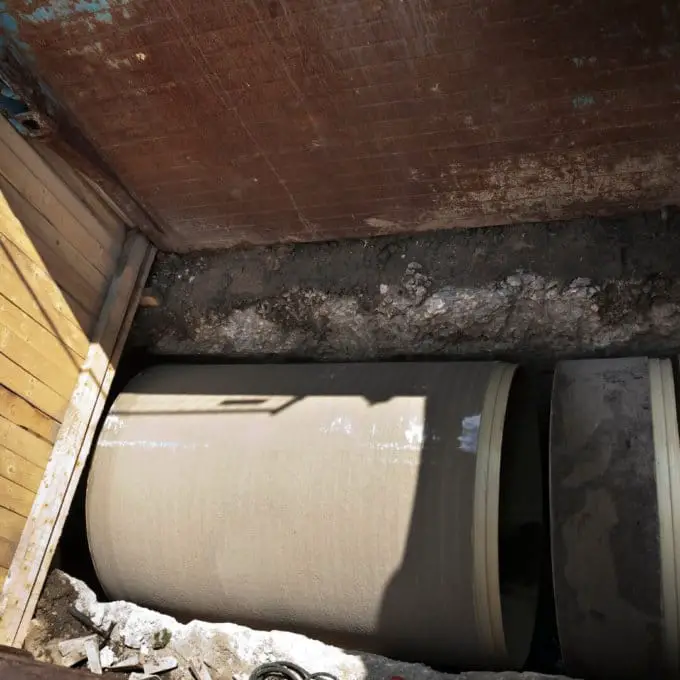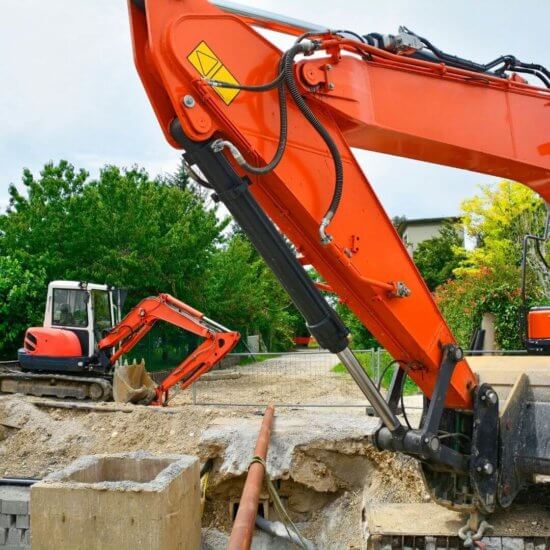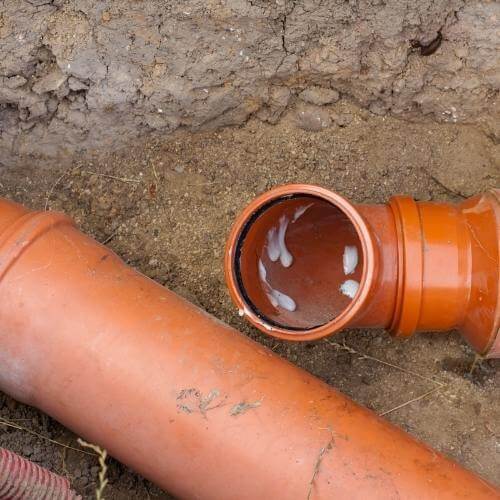Do you want to know more about cost for trenchless sewer line replacement?It comes a time in our sewer systems that repair and replacements get required. If so, you might be wondering how cheaply you might sort your sewer line breakdown.
In addition, the struggle with manually digging trenches, removing old roots, and other support infrastructure along the sewer line may prove challenging. This scenario makes us think of the trenchless sewer line replacement technique.
This article breaks down all the factors surrounding this replacement process and the cost breakdown for such a process. We hope to help you understand what trenchless sewer line replacement entails and how to go about it.
Cost for Trenchless Sewer Line Replacement

The conventional sewer line replacement method involves fixing damaged drainage pipes by digging up trenches, replacing the broken pipes, and covering up those trenches later. However, trenchless sewer line replacement will include less digging and faster drainage pipe replacement.
In a nutshell, this process will be that simple. You only have to dig up a few inches to access the pipes you need to replace. Trenches tend to mess up with people’s expensive landscaping property or other traffic amenities.
Trenchless sewer line replacement will lead to more minor landscaping disturbances, making them work faster and easier.
What determines the quotation of your trenchless sewer line replacement?
If you decide on this trenchless method, you will need a quotation from your sewer line replacement contractor. If you get to replace the sewer line in your home, these factors will help you determine the overall cost. The cost of replacing major plumbing will not always be a direct cost evaluation. Several factors play a significant role in determining what finances will prove sufficient.
Your geographical location
Where you stay determines the cost of living you incur. For instance, in larger cities, living costs prove higher than in remote upcountry areas. In large cities, you will incur many infrastructural obstacles like tiles, landscaping products, and various underground fixtures in your replacement process. Getting a professional contractor to help you deal with these infrastructural challenges will be more costly than in remote areas.
Rural areas have minor infrastructural disturbances, and contractors may come at a cheaper rate than those in the city.
Pipe type, shape, and size
Different pipes from different materials will determine the overall replacement cost. Whether you choose PVC, PEX, Copper, or CPVC pipes, the price will differ for each pipe type. For example, metal pipes may be more expensive than plastic pipes. Different plastic pipes will provide varying costs too. For instance, CPVC will be more costly than PVC pipes.
The shape of the pipe will also present variability. For example, pipes with bends will be more costly to replace than straight pipes.
Small-sized pipes may sell at higher costs than large-sized pipes. On the other hand, large-sized pipes may require more replacement material than smaller pipes.
Trenchless technique applied
Trenchless sewer line replacement comes with various techniques. Each technique provides a different cost estimate from the other. The method you settle for will add to your general replacement cost.
The strategic positioning of the pipe
Sewer lines may get located in tricky-to-locate areas. Easy-to-locate areas might be in your backyard with minor disruptions. Now imagine replacing a pipe below the swimming pool or under the slab.
The access holes may get dug from weird places like the bedroom or even through walls. Hard-to-find locations will automatically increase the replacement cost since repairs to those disrupted areas need to get done.
The situation might get more challenging if you have utility lines like electric lines running under your property. This situation will call for professional dealings since interfering with such lines may prove life-threatening. [1]
Condition of sewer line pipes
If the pipes prove to be in the worst-case scenario upon the replacement process, it might require an entire sewer line replacement.
This change in the pipe lengths will add to more costs. Sometimes, you find that the sewer line system has just a few days to total collapse. Then, you will need to replace all the pipes in the sewer system.
If you experience back pitching, and the sewer water flows back to your home instead of to the sewer drain, then the entire trenchless process might get ruined. You may be required to completely dig out the sewer line to facilitate proper pipe replacement.
Extra replacement costs
Once you find a contractor, there will be some groundbreaking costs before the entire replacement process begins. These extra costs include:
- Sewer line inspection costs. The inspection process takes place by use of using a sewer inspection camera. It helps in determining the type of trenchless technique to use. Most inspection fees will be on you or may be later credited to you once the whole replacement occurs.
- Cleaning and prepping of pipes before replacement also comes at a cost.
- This process involves robotically inserting some line branches. These branching will come at an extra cost.
- The damages caused by any minimal or extensive digging will need to get repaired. Trenchless sewer replacement may sometimes damage property, even to a small degree. These repair costs may increase your overall cost.
While considering all these factors, we may equate the trenchless sewer line replacement at a minimal cost of $6,000 to $12000.
This cost may exceed depending on the above factors but not so much compared to the traditional sewer line replacement process.
This traditional one may take up to $13,000, excluding repairs on infrastructure, property, and other landscaping damages.
What are the various techniques applied in trenchless sewer line replacement?

The pipe bursting technique
A damaged sewer line gets replaced or repaired by first going through it. The contractors use a bursting head to access the sewer line in this process.
They attach a new pipe to the head and pull it through the old pipe. As the name suggests, the old pipe gets busted by the new, bigger pipe inside the old pipe. The old pipe gets pushed aside, and the new pipe successfully replaces it.
This replacement technique requires minimal digging, which takes place at the pipe entry and exit points. By so doing, you reduce the cost that could have gone to trench digging in the traditional trench method.
Slip lining
Unlike pipe bursting, this method uses a slimmer pipe for replacement. This liner intends to replace the old pipe by fixing leaks and weak points. Like in pipe bursting, you will need two holes to serve as the entry and exit points. However, the new pipe will be smaller than the original broken pipe in this method.
Cured-in-place piping (CIPP)
This method of trenchless sewer line replacement or repairing a broken occurs by inserting a liner containing epoxy in the old pipe. Once the liner fits inside the old pipe, the epoxy expands to increase the size of the pipe in the dimension of the old pipe’s wall. This way, the new inserted liner serves as the new sewer pipe, fixing any existing old leaks.
Which of these trenchless sewer line replacement methods will be best for you?
Now that we have presented you with these three trenchless methods of replacing sewer lines, one of them might be best for you. To find the best that will suit you, you need to evaluate your needs and each method’s results.
For instance, cured-in-place piping will offer the most minimal digging and may prove challenging. Sometimes, the expanded liner may not suit your piping system, and some pipes often fail to do the job.
For slip lining and pipe bursting, the pipes change in size. Consequently, these methods will either cause some budget increase or decrease depending on the new junctions you need to create.
But with the best evaluation, you will get to the best trenchless technique that will prove perfect compared to the traditional trench replacement method.
What are the main advantages of trenchless sewer line repair Vs. Traditional?

Trenchless sewer line repair proves cheaper than the traditional trench replacement technique.
Let’s look at it from the cost perspective since we have based our discussion there. The three trenchless sewer line repair techniques prove cheaper when we compare them with the traditional method. Therefore, we break down the cost of the three trenchless techniques in the table below.
| The cost approximations for fixing your sewer line using the trenchless sewer line repair method |
| 1. Pipe busting- $145 to $195 to repair a linear foot |
| 2. Pipe lining- $135 to $185 in a linear foot |
| 3. Cured-in-place piping- $200 to $285 in repairing a linear foot |
The traditional method will cost $175 to $195 in repairing a linear foot. This cost does not include manual digging or replacing any interior properties like tiles or exterior infrastructural property.
These repairs prove expensive and may raise the traditional method cost to unimaginable levels. This fact makes trenchless techniques the perfect way to deal with your sewer line replacements.
They take a shorter installation time
The traditional replacement method takes approximately three to four days. Digging trenches may take up to a day. But with trenchless sewer line replacement, it may take a single day. Since these methods don’t involve digging trenches, the process takes faster, and you get to move to other sections of your project.
Trenchless techniques require fewer workers
Like other construction stages, the more the working personnel, the more the cost. Since trenchless sewer line replacement requires no digging, the personnel decreases. You will therefore pay fewer people than you would in traditional technique.
Trenchless sewer line repair provides minimal destruction
Traditional trench sewer line repair comes with both internal and external damages. The cost of repairing these properties proves overwhelming. With trenchless sewer line repair techniques, the damages will run at a lower price. The fewer damages might be one primary reason you need to use this technique with your sewer pipes repairs.
Is it true that sewer liners are illegal?
When done correctly, sewer lining may be a great deal. However, if you need to consider going for the trenchless techniques, you must walk with licensed professionals with a reputable company review. Poorly done sewer liners with fiberglass will narrow your sewer piping.
This size may cause blockages with some contractors leaving them non-operational in the first place. Again, check the company reviews, and ensure you have an open talk about the liners’ effectiveness before settling on them.
If you share your sewer plumbing drainage, it might be best if you didn’t go for sewer liners to fix your sewer line.
Frequently Asked Questions
- How much should it cost me to replace a sewer line?
Replacing a sewer line using the trenchless sewer line replacement method may take $12,000. This price may get slightly lower or higher depending on various factors.
Traditional sewer line repair using trenches may take up to $13,000, excluding the cost of digging trenches and repairing damaged property. These two inclusions make it costly.
- Are there tips on how to pay for sewer line replacement?
It would be best if you were very careful when paying for this trenchless sewer line replacement method. Ensure you get your services with a reputable company first. Secondly, test the system before the contractor leaves and ensure you have it functioning correctly.
- How much would it cost to replace a sewer line?
The cost of replacing a sewer line will depend on where your house gets located. It will be expensive in urban areas while more affordable in rural and remote areas.
Replacing a sewer line using the traditional trench method proves more costly than the trenchless replacement method. With the conventional way, you may part with more than $20,000, while the trenchless procedure will cost an average of between $6,000 to $12,000.
Final Thought
Replacing a sewer line will be a serious process that requires a serious contractor. If you choose the trenchless sewer line replacement technique, you will save a lot.
The process also takes lesser time than the traditional trench method. However, you will need the best company and contractor to make the process successful. Some unlicensed dealers may charge you excessively and provide non-functional sewer line solutions. Therefore, you should conduct due diligence on the contracting company to ensure you get satisfactory results.

Michael Davis is a heating & plumbing expert who currently works as independent contractor in SC. He also writes for Plumbertip.
For almost 10 years he worked on various plumbing tasks across South Carolina.



